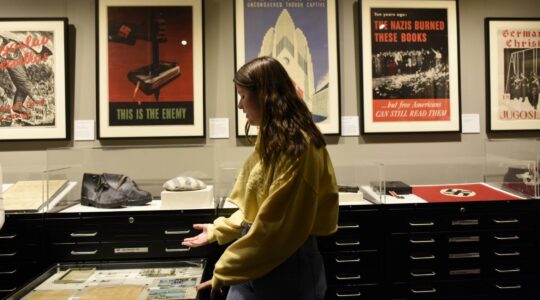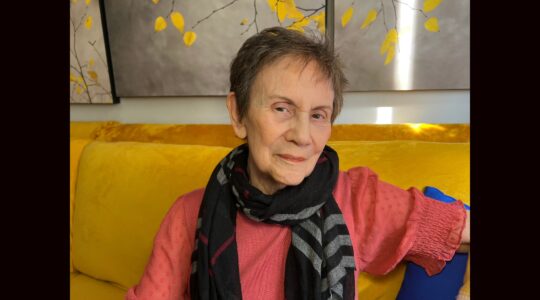Earlier this year, our team of Jewish educators formalized a question that we’d been asking for a while: How would our study of Torah be different if we expected that any source sheet with more than two sources include at least one non-male-identified voice?
This standard, which we coined “the Kranjec Test” after the Senior Jewish Educator at Hillel JUC of Pittsburgh Danielle Kranjec, demands that we learn from Jewish individuals whose voices have been missing from the cacophony of the beit midrash for these many years of our textual tradition.
Source sheets are essential tools in the Jewish classroom. A typical source sheet provides excerpts from Torah, Talmud, midrash and various commentaries on the topic at hand. Like the tradition itself, source sheets have been dominated by male and male-identified voices.
What happens if we immerse ourselves in the learning and ideas contributed to Jewishness by Jewish women, and then see what emerges?
For many, this standard was de rigueur, old news, and that we had to propose this at all was a sign of our own need to catch up. Yet almost immediately, our team at Hillel International became confessors for Jewish educators, representing a diversity of identities, who felt the need to reveal how often they failed the test. We began to realize that although many of us consider ourselves inclusive and even feminist educators, once the absence of voices has been pointed out, we recognize that we’ve not been living up to our most precious values. The many instructive responses noted that when voices are missing, the fullness of Torah is also suffering, and the fullness of Torah is what we all ought to be striving for in our learning and teaching.
We might best understand this issue as one of adaptive change and not a mere technical challenge. To retrofit old curricula with tokenized non-male sources, for example, would be a disservice to the tradition and indeed to the non-male voices that might be merely added on.
We’ve heard from educators and educational institutions that grappled with this challenge and understood the paradigm shift that it might entail. One prominent educational leadership organization shared how the test has forced them to look back at curricula that have been time-tested and effective for generations of learners. And not many of their source sheets passed the Kranjec Test. The opportunity to rethink the sources they teach will bring them more in line with their professed and deeply held values, they told us.
Another prominent educator decided to put her source sheets to the test, and the response from one learner, while appreciative, reflected the challenge that efforts toward inclusion often provoke. That learner appreciated the commitment to offering a balance of “men” and “women,” but asked if the concept could be taken one step further to seek out the voices and teachings of gender non-binary and transgender folks as well. This is a laudable and important goal, one that is by most measures far more challenging than the Kranjec Test on its own. It’s also important to recognize that the goal of broader inclusion should not be a reason to reject the premise of the effort in the first place. This work is adaptive, meaning it requires the commitment of both learners and educators and cannot to be imposed by force of authority, and it will take time to achieve. We come to understand that it’s not just about dropping sources into sheets but about rethinking our system of learning and the voices it values.
The quality of our teaching, and the impact of our Torah, is improved by a diversity of voices, and the adaptive change that we call for is one that immeasurably enriches the conversations we are having.
Danielle had already been seeking this sort of transformation in her teaching and curricula, and continues to be challenged on the broadness of her inclusion. During a recent class presented to college students, a criticism of her all-Ashkenazi source sheet was raised. Danielle has continued to challenge herself in presenting historical texts in women’s own words representing the breadth of the diaspora.
Ben has been personally challenged to go beyond the sources he knows best from his yeshiva education, to learn new texts and to rethink curricula that he had returned to multiple times.
The Kranjec Test has inspired new levels of accountability across multiple domains of inclusion that will only serve to improve and enrich the vision that we have of ourselves and who we are as a people.
In particular, college students demand to hear the full spectrum of voices of our people. They, rightly, expect to see their own diversity reflected in the text. Without being inclusive in the ways the Kranjec Test demands, their educators will fail in that mission.
The exclusion of women’s voices on the pages of our most sacred teaching should be anathema.
Today, it is an expectation that women will be included in equally meaningful ways on conference panels. This ban on “manels” has raised the voices of female experts across all sectors. The exclusion of women’s voices on the pages of our most sacred teaching should be equally anathema.
It feels risky to let go of our traditional hierarchy of sources and build something new, but it is this endeavor that will truly yield the results we are looking for, not just a simple add-on to what already exists. To get there will take time but also the commitment of each of us who are dedicated to Torah, equality, and building a generation of learners who have an expectation of inclusion.
Danielle Kranjec is senior Jewish educator at Hillel Jewish University Center (Hillel JUC) of Pittsburgh. Rabbi Benjamin Berger is the vice president of Jewish education at Hillel International.
The New York Jewish Week brings you the stories behind the headlines, keeping you connected to Jewish life in New York. Help sustain the reporting you trust by donating today.




